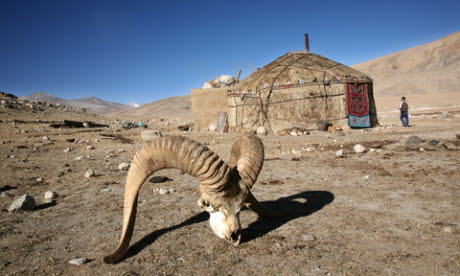
Know your 'stans, from your Tajiki' to your Afghani'
There’s a distinct lack of originality in Central Asian nomenclature: no less than seven countries are called something-stan. The core f ive are Kazakhstan, Kyrgyzstan, Uzbekistan, Turkmenistan and Tajikistan; Afghanistan and Pakistan are honorary ’stans – they share the su ffix (Persian for ‘land of’) but are less central geographically.
This region has much shared history, linked first by the Silk Road, later by Soviet rule. But each is quite unique – in terrain, culture and travel experiences too.
Our quick guide will help you tell one ’stan from another.
Capital: Dushanbe
Area: 143,100 sq km
Population: 7.8 million
Sandwiched between China and Afghanistan, this former Persian settlement is made up of a mêlée of clans. Its long and combative history takes in Alexander the Great, Russian and British spy games and a civil war.
Despite being the poorest of all the former Soviet countries, it’s rich in travel experiences, offering striking scenery and gargantuan peaks – 93% of the country is mountainous.
Highlights:
Top tip: Keep documents handy: military officials will be eager to vet your papers in towns; there are numerous checkpoints too.
Capital: Bishkek
Area: 199,951 sq km
Population: 5.5 million
Rich in nomadic culture, high peaks and super horse-riding across the steppes, Kyrgyzstan is the adventure hub of Central Asia. It has few historical sites – thanks partly to the marauding of Genghis Khan. But what it does have is mountains. Lots of them.
More than 90% of Kyrgyzstan is higher than 1,500m, making it a paradise for walkers, trekkers, climbers, riders and anyone who loves epic scenery.
Highlights:
Top tip: In remoter areas, toilets are usually long-drop: take your own toilet paper and soap.
Capital: Tashkent
Area: 447,400 sq km
Population: 28.4 million
Land-locked and ’stan-locked, Uzbekistan was once one of the most vital hubs on the Silk Road. Samarkand is a city of dazzling mosques, monuments and caravanserais, but it’s far from alone. Bukhara and Khiva gleam with a medieval architectural bounty: intricately tiled palaces, minarets, mausoleums and madrasahs (Islamic schools) grace the cities respective squares.
Highlights:
Top tip: A pure wool carpet might cost £200-plus; carpets on cotton bases, about half that price; silk options, ten times as much.
Capital: Ashgabat
Area: 488,100 sq km
Population: 5 million
Off the beaten track and slightly off the wall. From Ashgabat’s rotating gold statue of deceased President for Life Niyazov, to dinosaur footprints and burning gas craters of the Karakum Desert, unique experiences await.
Highlights:
Top tip: You need guides outside the city – independent travel forbidden.
Capital: Astana
Area: 2,724,900 sq km
Population: 17.5 million
This Central Asian giant’s appeal for travellers lies in its
emptiness. The country stretches from the shores of the Caspian to the
Chinese border, with desert, steppe, mountains and lakes in between. The
nomadic peoples of the Central Highland steppes offer fine yurt
hospitality.
Highlights:
Hopping between the ancient cities dotting the Silk Road through the Kazakh Desert
Top tip: Read In Search of Kazakhstan (£8.99, Profile Books) by Christopher Robbins for insight.
Capital: Islamabad
Area: 796,095 sq km
Population: 190 million
Sadly, Pakistan is the stuff of negative news headlines. You need to do your research beforehand, but visitors will be rewarded with a warm welcome, awe-inspiring scenery and world-class remnants of ancient civilisations – yet few other tourists.
Highlights
Top tip: Be culturally considerate – cover legs/shoulders (both sexes).
Capital: Kabul
Area: 652,230 sq km
Population: 30.4 million
Its location has guaranteed it a starring role in Silk Road trade, but, sadly, a string of conflicts has decimated the country’s wildlife, architecture and infrastructure while the security situation remains highly volatile.
Highlights:
Top tip: A handful of tour operators (eg Wild Frontiers) run trips.